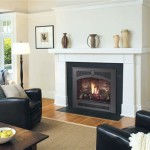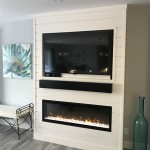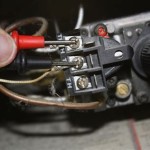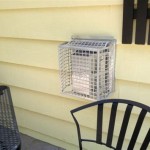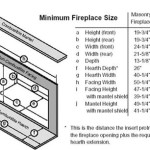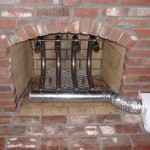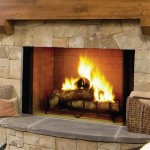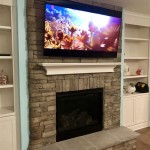```html
The Essential Guide to Indoor Fireplace Screens
Indoor fireplace screens are more than just decorative accessories; they are crucial safety devices that protect homes and families from the hazards associated with open fireplaces. These screens serve multiple functions, including preventing sparks and embers from escaping the firebox, protecting children and pets from accidental contact with flames, and enhancing the overall aesthetic of the fireplace area. Understanding the different types of fireplace screens, their construction materials, and the factors to consider when choosing one is essential for ensuring both safety and visual appeal.
Safety First: Protecting Your Home and Family
The primary function of a fireplace screen is to contain sparks and embers. When wood burns, it can release small, glowing fragments that can travel a significant distance, potentially igniting nearby rugs, furniture, or other flammable materials. A well-designed screen effectively blocks these projectiles, significantly reducing the risk of house fires. This is especially crucial in homes with young children or pets, who may not understand the dangers of an open fire.
Beyond ember containment, a fireplace screen acts as a physical barrier. It prevents accidental contact with the flames and hot surfaces of the firebox. This is particularly important for children and pets, who may be drawn to the warmth and light of the fire. The screen creates a safe zone around the fireplace, minimizing the risk of burns and other injuries. Furthermore, it can offer a degree of protection from the intense radiant heat emitted by the fire, making the surrounding area more comfortable.
Proper installation and maintenance are key to ensuring the safety effectiveness of a fireplace screen. The screen should fit snugly against the fireplace opening, without any large gaps that sparks or embers could escape through. Regular inspection for damage, such as tears or holes in the mesh, is necessary. Any damage should be repaired promptly to maintain the screen's integrity.
Types of Fireplace Screens: A Variety of Styles and Functions
The market offers a wide variety of fireplace screens, each with its unique design and functionality. Understanding the different types allows homeowners to choose the screen that best suits their needs and aesthetic preferences. The most common types include single-panel screens, three-panel screens, bi-fold screens, and decorative screens.
Single-panel screens are the simplest and most affordable option. They consist of a single mesh panel framed by a metal border. While straightforward, they offer adequate protection against sparks and embers. Three-panel screens provide greater coverage and stability. The two side panels can be adjusted to fit different fireplace openings, and they offer a more substantial barrier against drafts. Bi-fold screens feature two hinged panels that can be opened for easy access to the firebox, making them convenient for adding wood or tending to the fire.
Decorative screens prioritize aesthetics. These screens often feature intricate designs, ornate details, and a variety of finishes. While they offer the same basic protection as other types of screens, their primary focus is to enhance the visual appeal of the fireplace area. Some decorative screens incorporate glass panels or other materials to create a unique and eye-catching focal point.
Within these main categories, there are further variations in style, such as arched screens, flat screens, and Victorian-inspired screens. Homeowners can choose a screen that complements their existing decor and enhances the overall ambiance of the room.
Materials and Construction: Durability and Aesthetics
The materials used in the construction of a fireplace screen significantly impact its durability, safety, and aesthetic appeal. Common materials include wrought iron, steel, brass, and glass. Each material offers different advantages and disadvantages.
Wrought iron is a popular choice for its strength, durability, and classic appearance. It can withstand high temperatures and is resistant to rust and corrosion. Wrought iron screens often feature intricate designs and handcrafted details, adding a touch of elegance to the fireplace area. Steel is another durable option that offers good heat resistance. Steel screens are typically more affordable than wrought iron screens and can be finished in a variety of colors and textures.
Brass screens offer a touch of sophistication and elegance. Brass is a durable and corrosion-resistant material that can withstand high temperatures. Brass screens are often polished to a bright sheen, adding a touch of warmth and luxury to the room. Glass screens are a more modern option. Glass screens are typically made from tempered glass, which is heat-resistant and shatterproof. Glass screens allow for an unobstructed view of the fire while still providing protection from sparks and embers.
The construction of a fireplace screen is also crucial. A well-constructed screen will have strong welds, durable hinges (if applicable), and a tightly woven mesh. The mesh should be made from a fire-resistant material and should be securely attached to the frame. Regular inspection of the screen's construction can help identify any potential weaknesses or damage that could compromise its safety and performance.
```
Barton 48 In Fireplace Screen Gold 4 Panel Fire Spark Guard Hinged Doors With Tools 96324 The Home Depot

Industrial Fireplace Screens Pottery Barn

Pleasant Hearth Classic Black Steel 3 Panel Fireplace Screen Fa010s The Home Depot

Steel Fireplace Screen Arched Folding Mesh 3 Flat Panel Indoor Accent Decor 54

Bowed Fireplace Screen Rejuvenation

Chesneys Usa Are Fireplace Screens Necessary

Ping For Fire Screens The New York Times

Pleasant Hearth Waverly Fireplace Screen

Industrial Fireplace Screens Pottery Barn

Vevor Fireplace Screen 44 Screens Decorative Black Solid Steel Cover Iron With Single Door Guard Heavy Duty Metal Mesh For Home Décor Com
Related Posts

